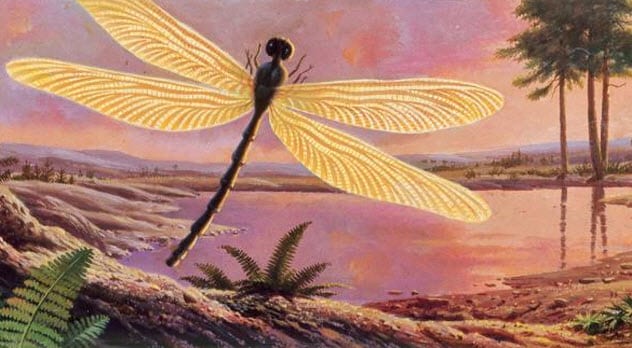 Crime
Crime  Crime
Crime  Animals
Animals 10 Cool Facts about the Most Mysterious Mammal on Earth
 Technology
Technology 10 Old-School Technologies Making Surprising Comebacks
 Movies and TV
Movies and TV 10 Movie Monsters Who Went from Scary to Silly
 History
History 10 True Tales of British Women Transported to Australia in Convict Ships
 Politics
Politics 10 Surprising Duties of the U.S. President
 Crime
Crime 10 Murderers Who Appeared on Game Shows
 Creepy
Creepy 10 Ghostly Tales You Probably Haven’t Heard Of
 History
History 10 Wars That Shattered the Pax Romana
 Miscellaneous
Miscellaneous 10 Common Words That Have Lost Their Original Meaning
 Crime
Crime Ten Interesting Tales of Trials Decided by Jury Nullification
 Animals
Animals 10 Cool Facts about the Most Mysterious Mammal on Earth
 Technology
Technology 10 Old-School Technologies Making Surprising Comebacks
Who's Behind Listverse?

Jamie Frater
Head Editor
Jamie founded Listverse due to an insatiable desire to share fascinating, obscure, and bizarre facts. He has been a guest speaker on numerous national radio and television stations and is a five time published author.
More About Us Movies and TV
Movies and TV 10 Movie Monsters Who Went from Scary to Silly
 History
History 10 True Tales of British Women Transported to Australia in Convict Ships
 Politics
Politics 10 Surprising Duties of the U.S. President
 Crime
Crime 10 Murderers Who Appeared on Game Shows
 Creepy
Creepy 10 Ghostly Tales You Probably Haven’t Heard Of
 History
History 10 Wars That Shattered the Pax Romana
 Miscellaneous
Miscellaneous 10 Common Words That Have Lost Their Original Meaning
10 Ways Earth Once Looked Like An Alien Planet
Before humans, the world was a very different place. Our planet didn’t always look the way it does now. It’s gone through some incredible changes over the past 4.5 billion years—and they’re even wilder than you’ve imagined.
SEE ALSO: 10 Creepy Mysteries Shown Through Images
If you could step back in time and stand on the Earth millions of years ago, you wouldn’t just see a few different animals. You’d see an alien planet pulled straight out of a science fiction story.
10 Giant Mushrooms Were All Over The Planet

Approximately 400 million years ago, the trees only sprouted up to about a man’s waist. Most were only a few feet high, and the other plants and fungi weren’t much bigger—except for the mushrooms. At one point in Earth’s history, mushrooms called Prototaxites were on every corner of the globe and they towered over every other living thing.
These things had trunks that stretched 8 meters (26 ft) into the sky and were 1 meter (3 ft) wide. That makes them smaller than a lot of modern trees. But at the time, they were the biggest of the plants and fungi on the planet, stretching a good 6 meters (20 ft) over the others.[1]
They didn’t have those big caps on top that we associate with mushrooms today. Instead, they were almost entirely the trunk—just a big fungus pillar sticking out of the ground. But they were everywhere. We’ve found fossils of these things on every part of the planet. So you wouldn’t have been able to go many places on Earth without finding a forest full of gigantic mushrooms.
9 The Sky Was Orange, And The Oceans Were Green

The sky hasn’t always been blue. About 3.7 billion years ago, it’s believed, the oceans were green, the continents were black, and the sky overhead looked like a fuzzy orange haze.
Back then, the makeup of the Earth was very different, and we have every reason to believe that left us with a completely different color scheme. The oceans were green because iron formations were dissolving into the seawater, spilling a green rust in and tainting it into the shade of a rusted copper penny. The continents were black because they would have been covered with cooling lava, and there weren’t any plants to cover it.
And the sky wouldn’t have been blue. Part of the reason it looks blue today is the oxygen in our atmosphere, but there wasn’t very much of it 3.7 billion years ago. Instead, the sky was mostly methane. As the Sun’s light pierced through an atmosphere of methane, we would have seen an orange haze hanging overhead.[2]
8 The Planet Stunk Of Rotten Eggs

We don’t just have theories about what the planet looked like. Scientists are pretty sure they know what it smelled like, too. And if anybody had been around to take a sniff of the air 1.9 billion years ago, they would have noted the distinct smell of rotting eggs.
That’s because the oceans were full of gassy bacteria feeding on the salt in the seawater. The bacteria took in salt and released hydrogen sulfide, filling the air with a stench that scientists say would have smelled like eggs that have gone bad.[3]
But these scientists are just being polite. Let’s be honest—we have creatures that emit a gaseous release of hydrogen sulfide today. If we can drop the scientific terms for a second, they’re really just saying that the world smelled like farts. Because that’s what these bacteria were releasing—frequent and unusually potent farts.
7 The Planet Was Purple

When the first plants started growing on the Earth, they weren’t green. According to one theory, they would have been purple. And if you saw the world from space three or four billion years ago, it would have been every bit as purple as it is green today.
It’s believed that the first life-forms on Earth absorbed light from the Sun in a slightly different way. Modern plants are green because they use chlorophyll to absorb sunlight, but it’s believed that the first plants used retinal—and that would have turned a vibrant shade of violet.[4]
Purple may have been our color for a long time. About 1.6 billion years ago, after the plants covering the planet had turned green, it’s believed that some of our oceans turned purple. A thick layer of purple sulfur covered the water near the surface, and there was enough of it to make entire oceans look purple—and to make them incredibly toxic.
6 The World Looked Like A Snowball

We all know that the world has had its share of ice ages. But there’s fairly recent evidence that one from 716 million years ago was as extreme as any cartoon. It’s called the “Snowball Earth” period because the Earth may have been so covered in ice then that it literally looked like a giant white snowball floating in space.
The world was so cold that there were glaciers at the equator. Scientists proved it by finding traces of ancient glaciers in Canada. That sounds like a weird place to look, but 700 million years ago, that part of Canada was at the equator.
As a result, the warmest parts of the Earth were as cold as the modern Arctic. Scientists no longer think it literally looked like a white snowball, though, because there was another horror of being alive in 716 million BC. Volcanoes were constantly erupting, filling the sky with ash and leaving the ice and snow a filthy, blackened mess.[5]
5 Acid Rain Fell On The Earth For 100,000 Years

Eventually, the Snowball Earth period ended—in the most horrific way imaginable. It’s believed that the Earth went through a period of what scientists call “intense chemical weathering.” That’s a nice way of saying that acid rain continuously poured down from the skies for 100,000 years.
The acid rain was so hard and heavy that it melted the glaciers that covered the planet.[6] In the end, this was one of the best things ever to happen to the Earth. It sent nutrients into the ocean and let life grow under the sea, sending oxygen into the atmosphere and making the Cambrian explosion life on Earth possible.
For the time being, though, it was a nightmare. The air was full of carbon dioxide, and the acid rain even poisoned the ocean. Meaning that before life could burst all over the Earth, it had to become a toxic, inhospitable wasteland.
4 The Arctic Was Green And Full Of Life

Approximately 50 million years ago, the Arctic was a very different place. This was a time called the early Eocene Epoch, and the world was a much warmer place. You could find palm trees in Alaska and crocodiles swimming off the coasts of Greenland.
Even the northern tip of the planet was covered in green. It’s believed that the Arctic Ocean was a gigantic freshwater pond and that it was absolutely teeming with life. The water was filled with green weeds, especially a green fern called Azolla that bloomed all over the Arctic.[7]
It wasn’t exactly tropical. During this era, the warmest months in the Arctic were only about 20 degrees Celsius (68 °F). Still, the northern parts of our world were full of giant tortoises, turtles, alligators, and early hippos, adapting to survive in a place with winters of permanent darkness.
3 Dust Blocked Out The Sun

When the asteroid blamed for wiping out the dinosaurs hit the Earth 65 million years ago, it didn’t end there. The world turned into a dark, scarred place of horrors—and it was even worse than you’ve imagined.
The impact sent dust, soil, and rocks flying into the sky and even into space. Tons of it, though, got stuck in the atmosphere and shrouded the whole planet in a massive layer of dust. For the creatures still on the Earth, the very Sun was blotted out of the sky.
That only lasted a while—months at the most. But even when the great cloud of dust faded, sulfuric acid stayed up in the stratosphere and got into the clouds.[8] They became so thick that they thinned out the Sun’s rays and brought on horrible storms of acid rain for 10 years.
2 It Rained Liquid Hot Magma

That asteroid, though, was nothing compared to the ones that hit the planet four billion years ago. In the early days of our planet, a rain of asteroids pummeled the Earth and turned it into a hellish landscape from your worst nightmares.
The oceans on the planet got so hot that they boiled. The heat from the asteroid impact actually ended up vaporizing the first oceans on Earth, turning them into steam that just drifted up and vanished. Huge parts of the surface of the Earth melted. The gigantic rock masses that covered the planet turned into a liquid that drifted around like a slow-moving river at inconceivably hot temperatures.
Even worse, some of the rock was vaporized and became Earth’s atmosphere. Magnesium oxide went up into the atmosphere like evaporating water and condensed into droplets of liquid hot magma.[9] So just about as often as we get rain today, the Earth would have seen liquid magma falling from the skies back then.
1 Gigantic Insects Were Everywhere

Around 300 million years ago, the world was covered with massive lowland swamp forests and the air was absolutely filled with oxygen. There was about 50 percent more oxygen than we have today, and that created an incredible burst of life. It also created massive, terrifying insects straight out of a Godzilla movie.
For some creatures, all that oxygen in the atmosphere was too much. Little insects couldn’t handle it, so they started evolving bigger and bigger. In fact, some of them became huge. Scientists have found the fossilized remains of dragonflies that are as big as modern seagulls, with wings that were more than 0.6 meters (2 ft) long.[10]
Gigantic beetles also traveled over the Earth as well as all kinds of other gigantic insects. But they weren’t friendly. Those massive dragonflies, scientists believe, were flesh-eating predators.








